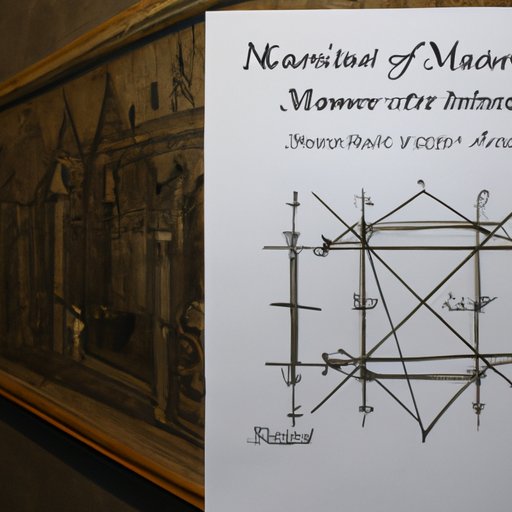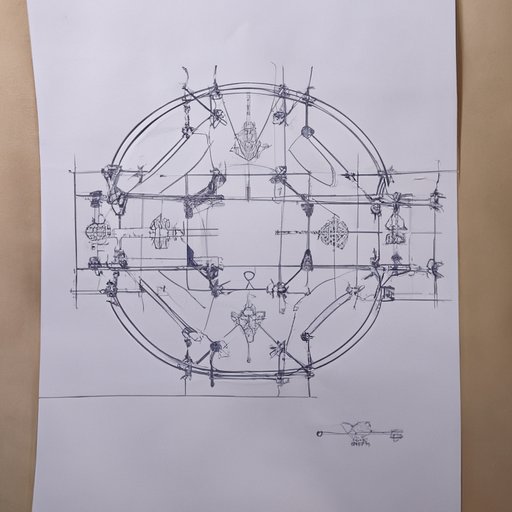Introduction
The Renaissance was a period of great artistic achievements, with some of the world’s most renowned works of art being produced during this time. One of the key elements to the success of these works was the use of mathematics, which played an important role in the development of Renaissance art. From painting and sculpture to architecture, mathematics was used to create aesthetically pleasing and structurally sound works of art. In this article, we will explore the ways in which mathematics was used in Renaissance art and how it influenced the development of the period.

Analyzing the Influence of Mathematics on Renaissance Art
Mathematics played an important role in the production of Renaissance art, with many artists relying on mathematical formulas to create aesthetically pleasing works. Paintings and sculptures were often designed using mathematical formulas to ensure that they were balanced and symmetrical. For example, Leonardo da Vinci is said to have used the Golden Ratio – a mathematical formula based on the Fibonacci sequence – when creating his iconic works such as the Mona Lisa. This helped him to create a sense of balance and harmony in his paintings.
Geometry was also an important part of Renaissance art, with many artists using geometric shapes and patterns to create their works. Geometric shapes such as circles, squares, and triangles were used to create aesthetically pleasing works of art, as well as to convey certain meanings. For instance, circles were often used to represent eternity, while squares were used to represent stability and order. By incorporating these shapes into their work, Renaissance artists were able to create visually stunning pieces that conveyed deeper meanings.
Renaissance architecture was also heavily influenced by mathematics, with architects relying on mathematical formulas to create structurally sound buildings. During the Renaissance, architects began to use the principles of linear perspective, which relies on mathematical formulas to create the illusion of depth on a two-dimensional surface. This allowed them to create buildings that appeared more realistic and lifelike, as well as to incorporate features such as columns and arches.
Investigating the Relationship between Mathematics and Perspective in Renaissance Art
Mathematical formulas were also used to create perspective in Renaissance art. The use of linear perspective allowed artists to create the illusion of depth on a two-dimensional surface, making their works appear more realistic. Artists such as Leonardo da Vinci and Michelangelo used mathematical formulas to create the illusion of three-dimensional space in their paintings and sculptures, allowing them to create visually stunning works that seemed to come alive.
Mathematical formulas were also used to create visual harmony in Renaissance art. Many artists used the Golden Ratio when designing their works, as this ratio creates a sense of balance and proportion. This helped them to create aesthetically pleasing works of art that were visually appealing and pleasing to the eye.
Conclusion
In conclusion, mathematics played an important role in the production of Renaissance art. From painting and sculpture to architecture, mathematical formulas were used to create aesthetically pleasing works that were structurally sound and visually appealing. Mathematical formulas were used to create perspective, as well as to create visual harmony in Renaissance art. By utilizing mathematics, Renaissance artists were able to create some of the world’s most iconic works of art.
(Note: Is this article not meeting your expectations? Do you have knowledge or insights to share? Unlock new opportunities and expand your reach by joining our authors team. Click Registration to join us and share your expertise with our readers.)
